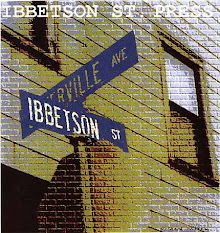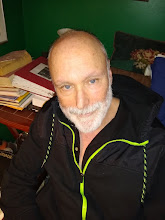A H A N D P I C K E D P O E M
presented by Michael T Steffen
Poor Fish
by Lewis Meyers / from Plume 172 December 2025
I saw the loser in 3-card Monte
pleading with the cat who ran the game:
You’ll give me my fifty back, won’t you?
Yesterday payday, rent today.
It’s only fair, chance is unjust,
and this can’t be happening to me,
can it? But above the avenue’s rich rug
the cards continued changing places,
continued slicking through the dealer’s practiced hands,
his dry eye out only for the police.
No one looking on or moving along
took the victim’s part. Where in our
lapsed world do marks find pity?
Pity goes to animals, who can’t help it,
and who try hard to stay away from us
unless a bright prospect entices them,
a lure for innocents. Like the pickerel
I caught who looked at me. Mutely
it beseeched me in the name of all that’s holy
to save it. I ate it, soul and body.
But the hooked man, poor fish, voiced
his complaint and plea, for all the good that did him,
as I heard his cries grow fainter as I swam into
the shadows of towers dangling their lighted suites.
\/ \/ \/
Whoever said The art of losing isn’t hard to master—? Much as I have loved that poem through the years, in all seasons, and through much consideration and much loss of my own, I’ve always thought it somewhat aloof and a matter of exercise, especially for Elizabeth Bishop. There is a sort of easy divinity and wisdom in the attainment—as an “art”—of acceptance. While every mother, widow and therapist will frown with the lot of us in the actual agony of that most unfair event of our being dispossessed : Loss is just something we never really do swallow with much ease, if grace. It strikes us down. It disheartens us. Aggrieves us. Yet—keys, credit card, phone…boat, home…job, bet, contest…parent, spouse, child… however severe or irreplaceable, loss remains the sting of stings, and perhaps only an aging true orphan of philosophy, religion, poverty, or poetry would be able to frame a consolation in acceptance with Bishop’s heart, wit and cultural and historical vantage.
Lewis Meyers’ stunning poem snatches us back unawares into the moment and the existential individuality of the awful moment and its feeling, in the instance of losing one’s rent money to a hustler in a game of three shifted and re-shifted face-down (anonymous) cards—Where’s the Queen? The philosopher and literary critic Joseph Campbell reminds us about the charmed quality of the number 3, its mnemonic resonance in every Tom, Dick and Harry; as well as its count with holiness heard in Trinity and seen in the dancing figures of the classical Graces; but also the recurrence of prongs on the Devil’s pitchfork and the succession of bad things that happen.
The unacceptable lesson is the lesson we seem to need, again and again. As easily as we swallow shiny readily available deals and advantages, we somehow, generation to generation, fail to get this lesson – easy come, easy go – into the understanding and reflexes of our possessive DNA. We remain as gullible to the flashy scam for easy profit as ever before.
The poem’s ending – as I swam into the shadows – does a peculiar thing with language that is characteristic of Lewis Meyers’ knack, to dial up and ring change on our vernacular understanding. His sleight of hand here is similar to that of the title of his 2024 collection Field Notes of a Flaneur, with its odd confusion of an urban observer in a scientific wilderness. The poem’s final lines take the city, which we often refer to as a “jungle” because of its survivalist demands, a feature in the pitiless hustle going on in the poem, and turn it into a psychological sea. I swam… The poet himself identifies with the poem’s eponymous victim, the fish, the city seen as a row of fishermen—the shadows of towers dangling their lighted suites… With the pun between “suites” and sweets, the image of the allures of the city comes easily into focus. There’s a stroke of poetic genius in the trope of making the city a sea, in its visionary correlation with and affirmation of a changing climate and its eventual physical impact on our major cities in their usual coastal locations. On the metaphorical register, the novelty of “sea” for city however must suggest the typological “jungle” of lingo past, and that jungle’s heft of significance in our struggle for civil rights as well as environmental restoration, with the greater tolerance and allowances for language we older readers knew back in the day, pre-911, way pre-Pandemic. Shifts in language measure shifts in temperament, civilized and cultural. Poetry like the other arts are accounts and artifacts so deeply permeated by the actual times, they stand indeed as the true chronicles of those times, our most reliable sources for how things once truly stood in our view of things and ways of expressing them.
Following Meyers’ untimely death in 2020, his wife Diana Tietjens Meyers has continued to curate the best of his poetry. In these past years his work has appeared in Plume, Paris Review, Poetry Northwest, Five Points, Hudson Review, Massachusetts Review, and Arkansas International. His book Field Notes of a Flaneur won the 2024 New Measure Poetry Prize and will be published early in 2026 by New Verse Editions.


































